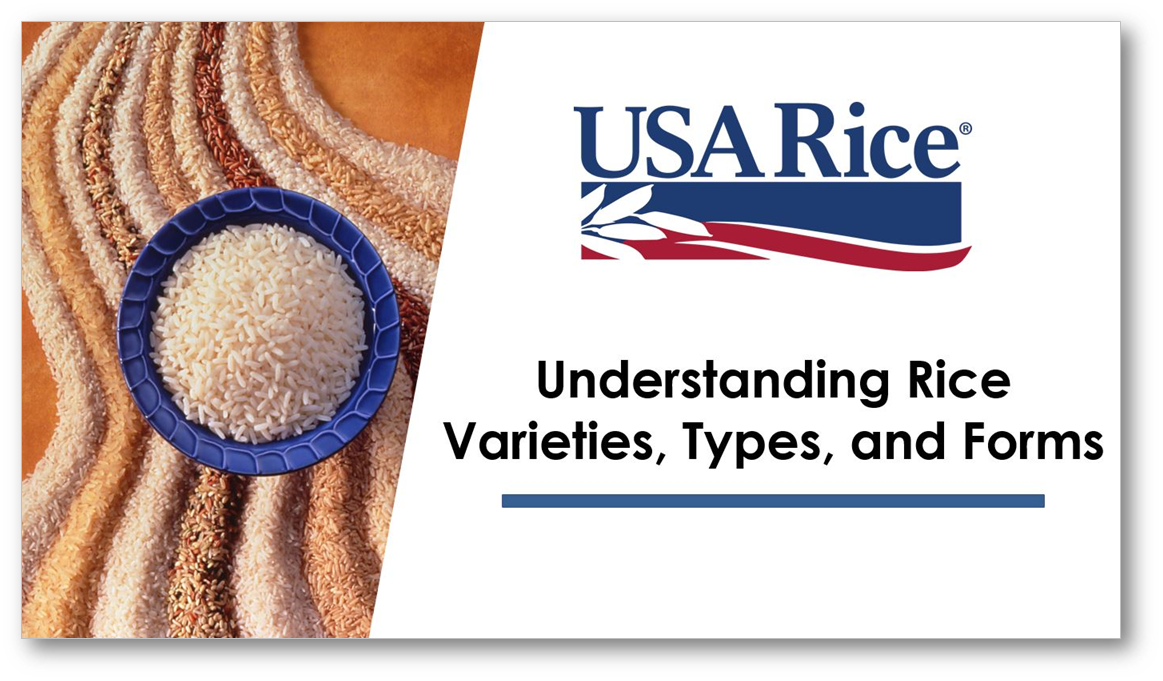
U.S. Rice Varieties
Rice Types & Forms
There are more than 120,000 varieties of rice in the world and they are categorized by degree of milling, kernel size, starch content, and flavor.
The U.S. rice industry is unique in its ability to produce all types of rice and is recognized as a dependable supplier of high-quality rice, both here in the U.S. and around the world.
Webinar: Understanding Rice Varieties, Types, and Forms
In this 30-minute presentation hosted by USA Rice, viewers will learn about the different varieties, types, and forms of U.S.-grown rice and their specific uses and applications.
Rice Classification by Degree of Milling
Rice can be classified as rough or paddy rice, which is rice as it is harvested in the husk, whole grain (brown) rice with the husk removed, or white rice with the bran layer removed.
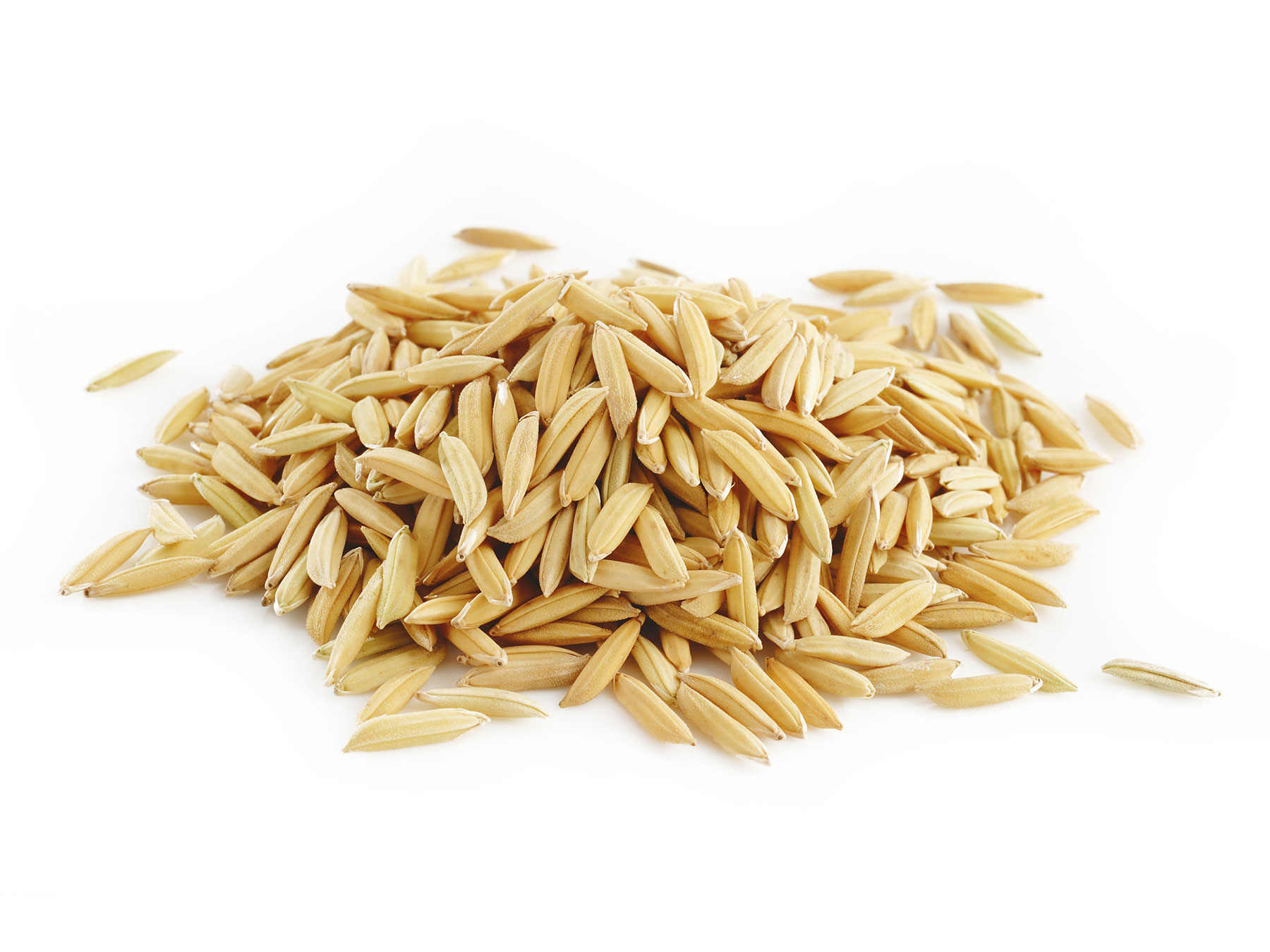
Rough Rice or Paddy Rice is completely unprocessed. Because it includes the hard fibrous hull, rough rice is indigestible and is not used for human consumption.
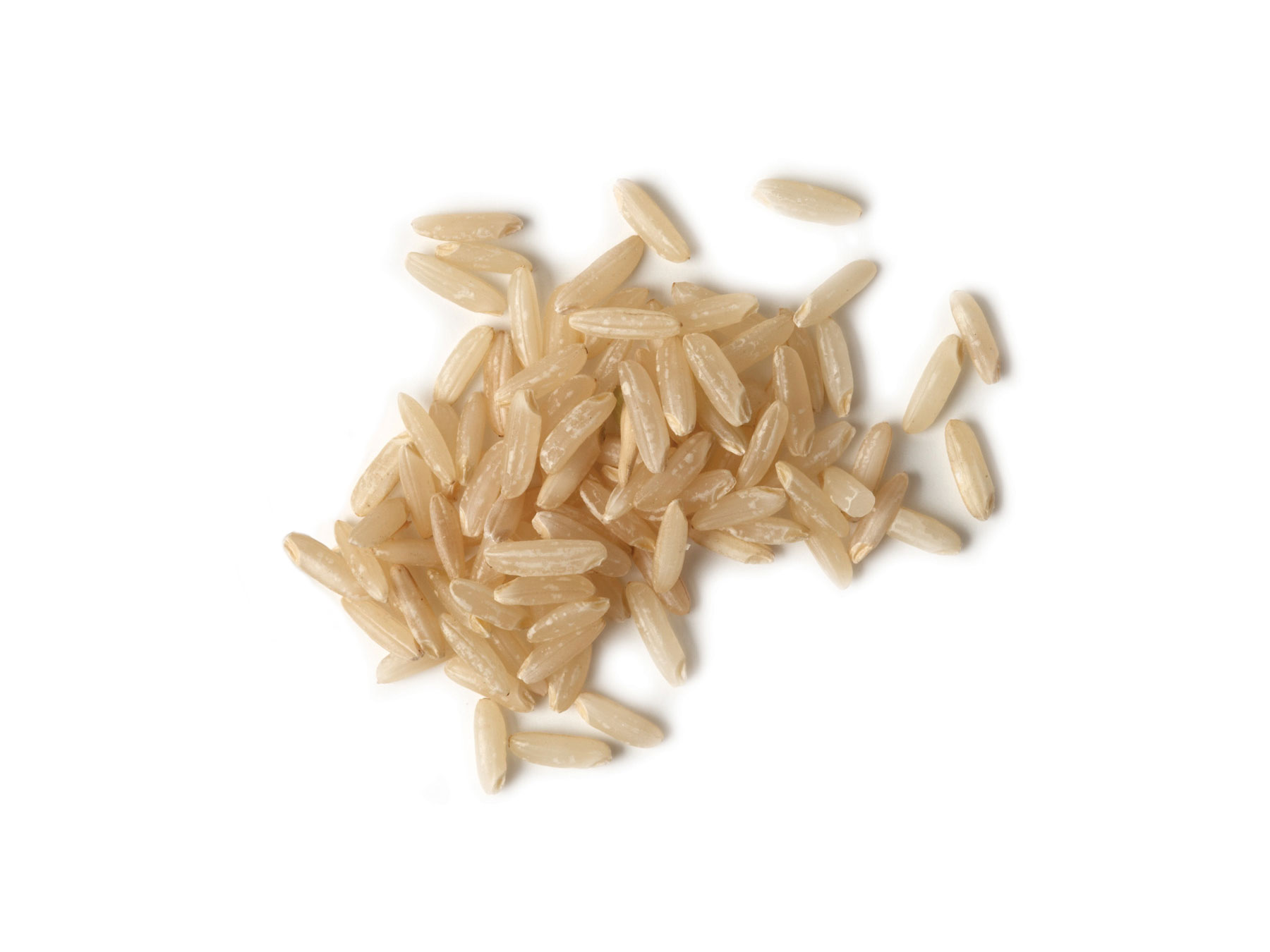
Whole Grain Rice (e.g., brown rice) is milled to have the hull removed, leaving the bran layer intact. It is 100 percent whole grain, containing the bran, endosperm, and germ.
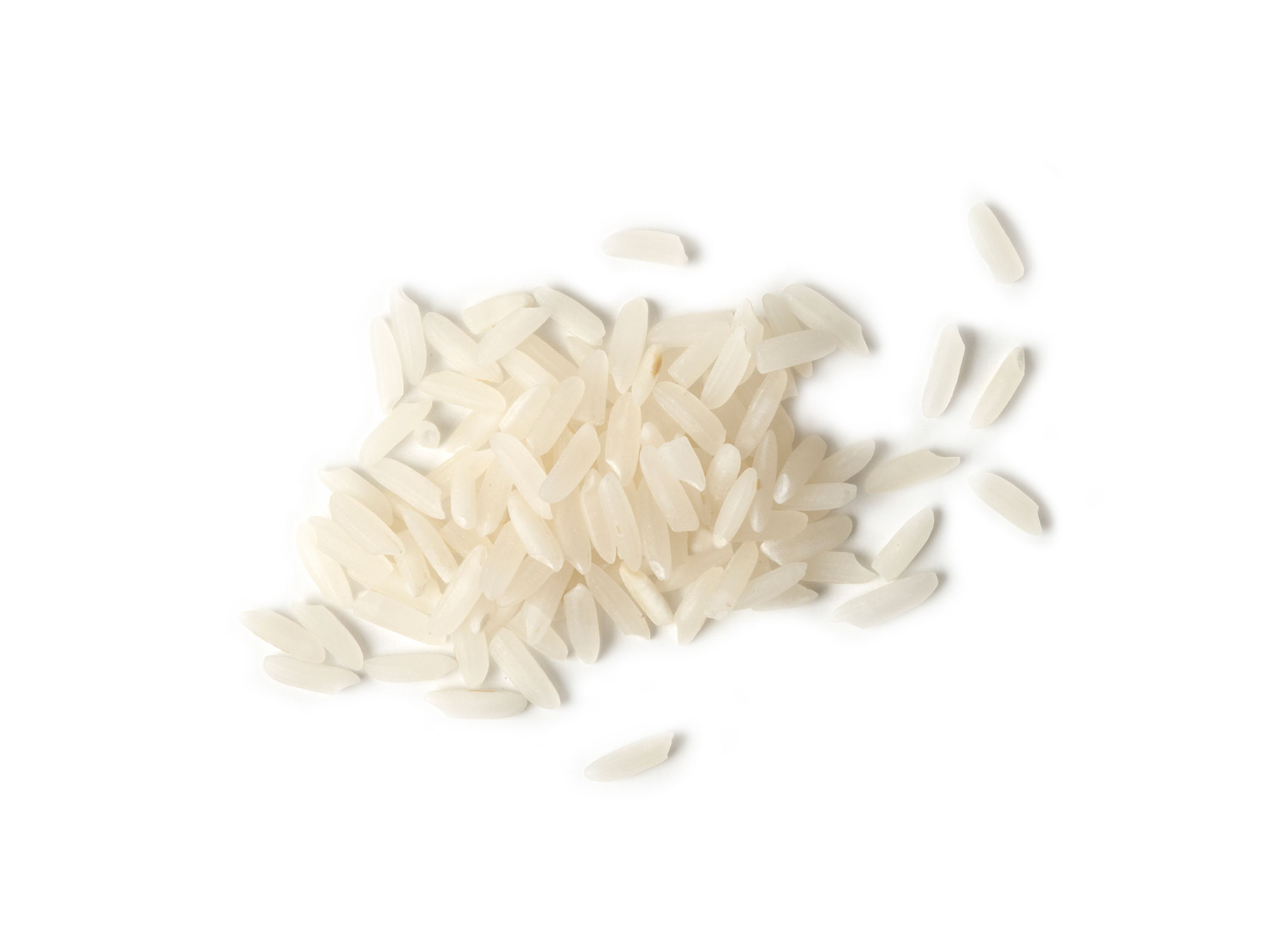
White rice (e.g., enriched) is the endosperm of the kernel and has been further milled to remove the outer husk, bran layers, and germ.
Kernel Size
There are more than 120,000 different strains of rice worldwide, but they all can be grouped into three basic categories, according to size:

Long grain rice has a long, slender kernel, three to four times longer than its width. Kernels are 6-8mm long. Due to its starch composition, cooked grains are lighter, fluffier, and more separated than their medium or short grain counterparts. Long grain works well in pilafs, stir-fry, salad, soup and southern favorites.
Growing Areas: Arkansas, California, Florida, Louisiana, Mississippi, Missouri, and Texas.
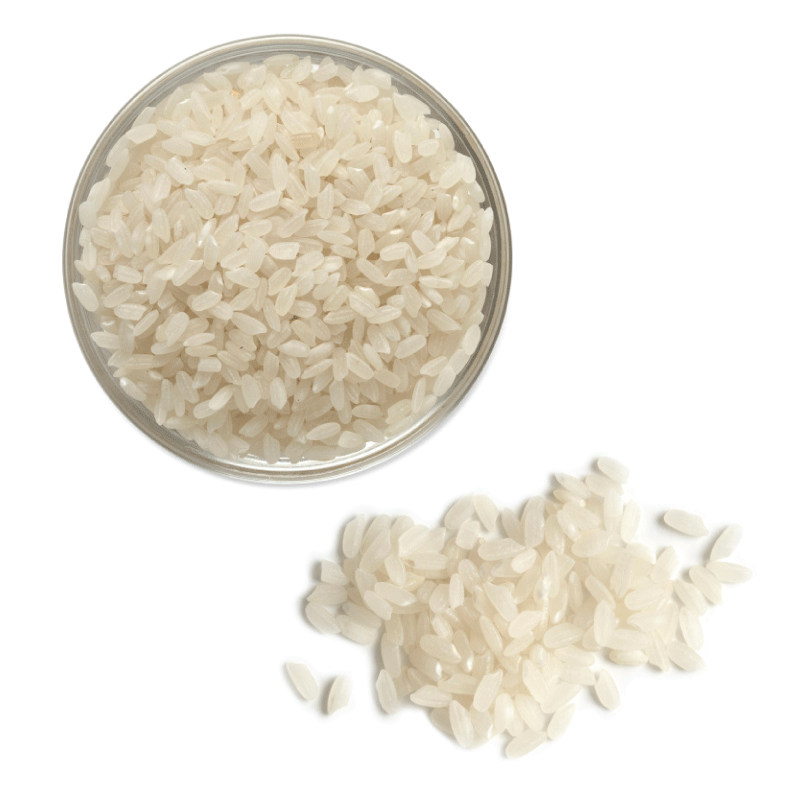
Medium grain rice has a shorter, wider kernel than long grain rice, two to three times longer than its width. Kernels are 5-6mm long. Cooked grains are moist and tender, with a tendency to cling together. Medium grain is ideal for dishes with a creamy consistency like paella or risotto, as well as Asian dishes and confections, and snacks.
Growing Areas: Arkansas, California, Louisiana, Missouri, and Texas.
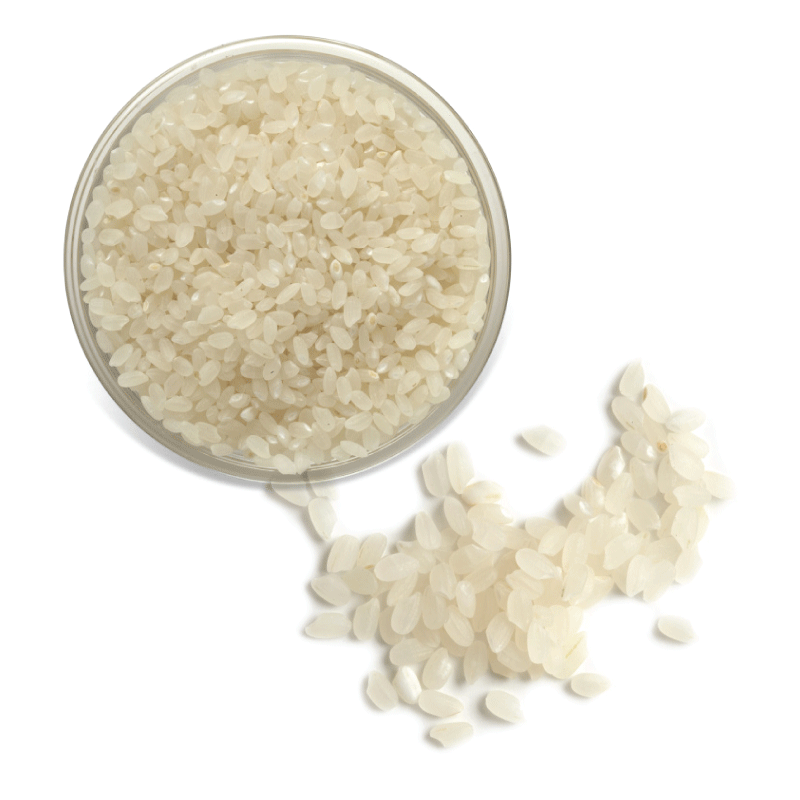
Short grain rice has a short, plump, almost round kernel. Kernels are 4-5mm long. Cooked grains are soft and stickier than other varieties with a slight springiness to the bite. Similar to medium grain, short grain rice is ideal for dishes with creamy consistency, sweet, and Asian dishes.
Growing Areas: Arkansas and California.
Specialty & Aromatic Rice
Some rice varieties are known for their distinctive flavor and exotic aromas. Flavor profiles of rice range from a popcorn flavor with subtle floral or toasted nuts to sweet spiciness or sweet nuttiness.
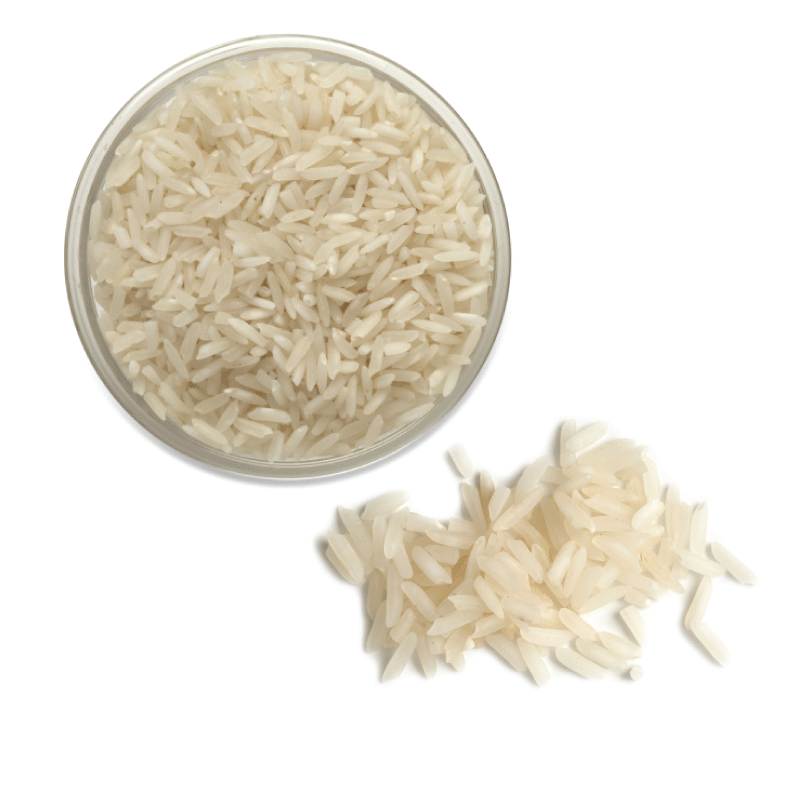
U.S. jasmine is an aromatic long grain rice with a 3:1 length to width ratio and distinct flavor. Jasmine’s popcorn aroma is attributed to a much higher proportion of 2-acetyl-1-pyrroline, a naturally occurring compound in all rice. Cooked grains are soft, moist, and cling together. Jasmine is a major ingredient in Thai cuisine and can also be swapped for any recipe calling for long grain.
Growing Areas: Arkansas, California, Louisiana, Missouri, and Texas.
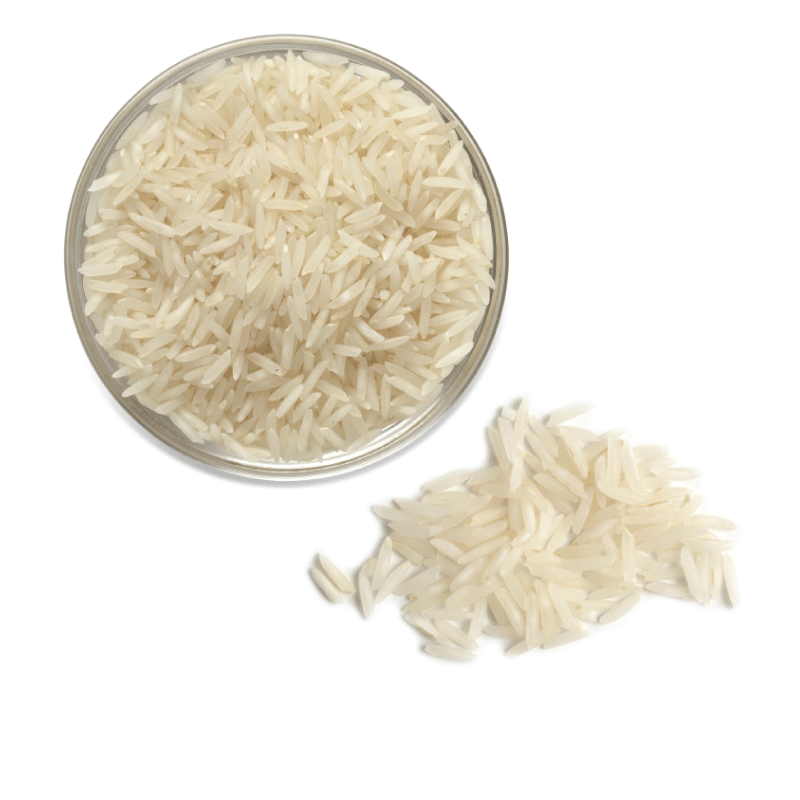
U.S. basmati is an aromatic long grain rice with its own distinctive aroma and flavor. It has a 3:1-4:1 length to width ratio and while cooking, grains become longer, not wider. The cooked grains are long, separate, and fluffy and have a savory, nutty flavor and are slightly chewy. Basmati rice is often used in Indian and Mediterranean dishes but can also be swapped for any recipe calling for long grain.
Growing Areas: Arkansas, California, Louisiana, and Texas.
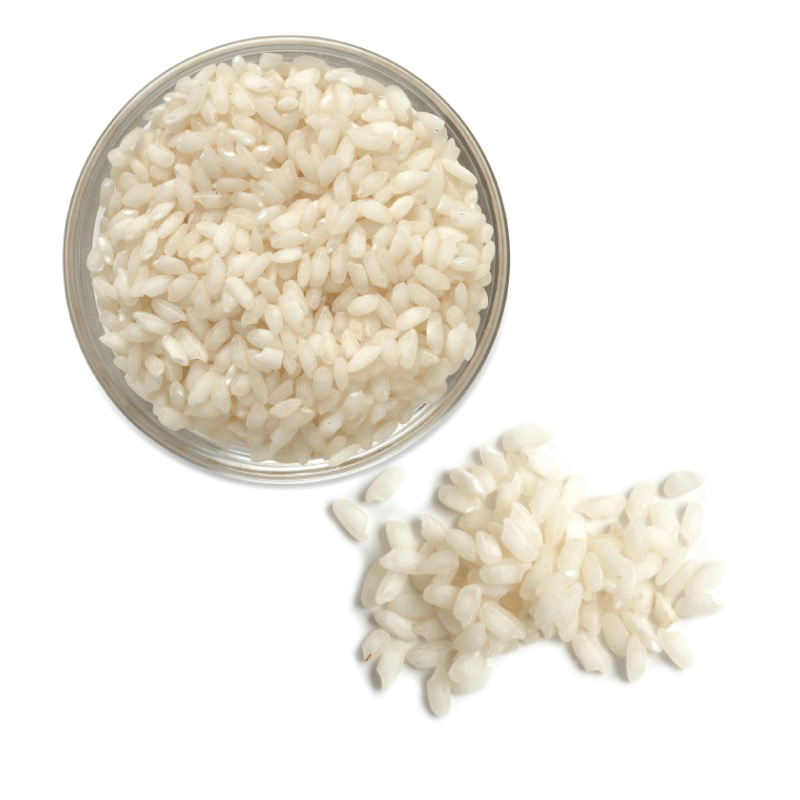
U.S. arborio is a medium grain rice with a characteristic white dot at the center of the grain and a higher protein content than other medium grain varieties. Primarily used in risotto and desserts, this rice develops a creamy texture and has an exceptional ability to absorb flavors.
Growing Areas: Arkansas, California, Louisiana, Missouri, and Texas.
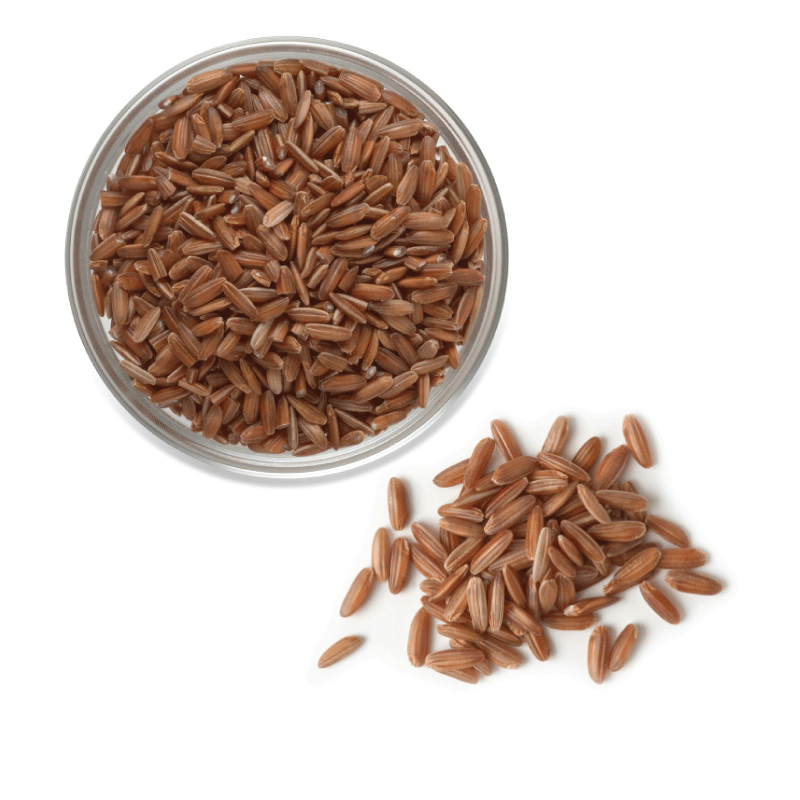
Red aromatic rice is long grain variety that has a deep-colored, honey-red bran and is 100 percent whole grain. Cooked grains have a savory, nutty flavor, and are slightly chewy. Red rice is perfect for salads, pilafs, soups, and side dishes.
Growing Area: California.
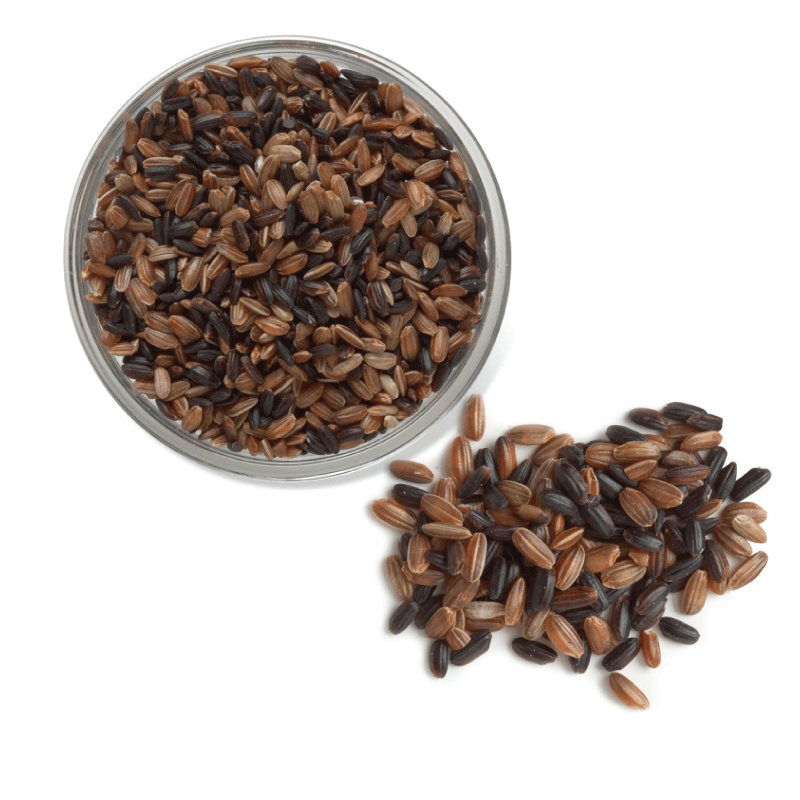
Black japonica is an aromatic medium grain variety with a dark black bran that is 100 percent whole grain. Cooked grains are slightly chewy with a subtle sweet spiciness. Ideal for porridges, desserts, and some traditional Chinese dishes.
Growing Area: California.
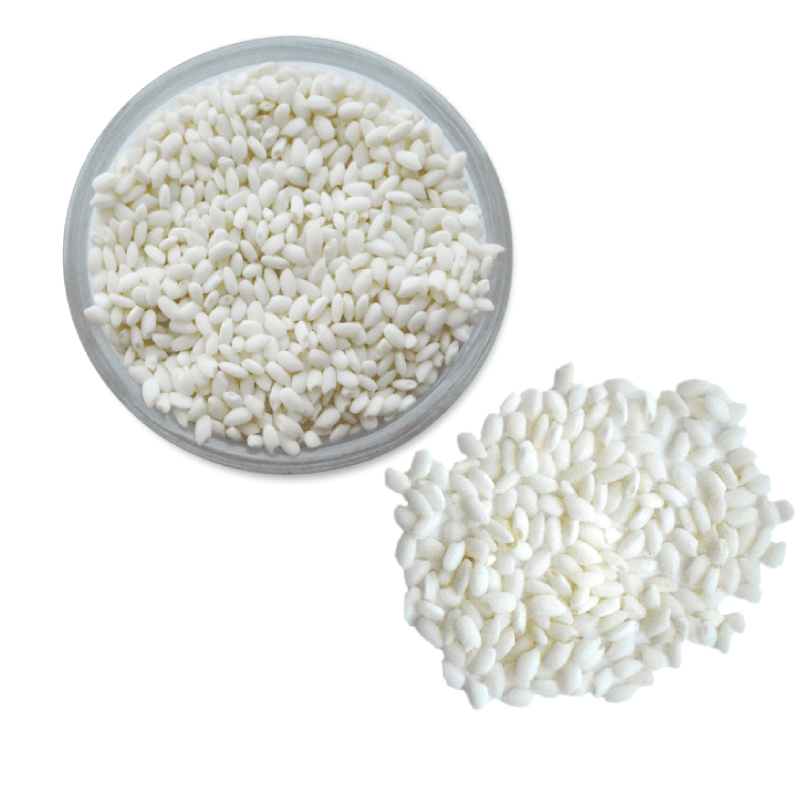
Sweet rice, also known as glutinous or sticky rice, is predominantly a short grain variety that is chalky white with short and plump grains. Cooked grains stick together due to their glutinous consistency and are commonly used in Japanese and Thai dishes. Ideal for sweet or savory dishes and can be used as a thickener in soup, sauce, gravy, and pudding.
Growing Area: California.
Forms of Rice by Processing
There are multiple forms of whole grain and white rice including regular milled rice, parboiled, pre-cooked rice, individually quick-frozen (IQF) rice, ready to-serve, and seasoned rice mixes.
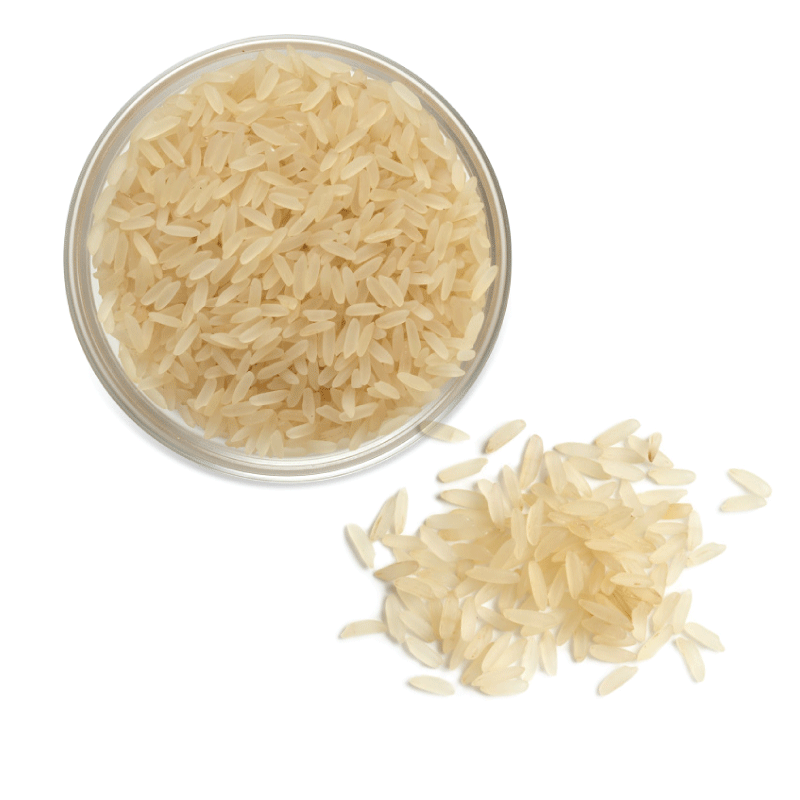
Parboiled is rough or paddy rice that has gone through a steam-pressure process before milling. This procedure gelatinizes the starch in the grain, ensuring a firmer, more separate grain when cooked. Translucent and amber in color, the raw rice has a golden sheen that turns to snow white after cooking. Cooked grains are fluffy and separate, but firmer in texture than conventional cooked rice.
Due to this process, parboiled rice absorbs more water resulting in more plate coverage. Parboiled rice is excellent for foodservice due to its ability to hold well on steam tables for longer periods of time than regular rice, and is used in frozen products and dry soup mixes.
Precooked rice, also called quick-cooking or instant rice, is white or brown rice that has been completely cooked and dehydrated. As a result, precooked rice only requires rehydration or brief cooking before serving.
Retort or ready-to-heat rice is fully cooked rice that is packaged in pouches or cup containers and is ready to eat after brief heating.
Cooked rice grains are individually frozen before packaging to provide a free-flowing ingredient for use in frozen and prepared food products and for ease of use in foodservice operations.
Regular milled, parboiled, or precooked rice containing pre-measured seasonings for ease of preparing a variety of flavored finished products, such as Spanish rice, wild rice pilaf, yellow rice, and more. Custom mixes are also available through some rice suppliers.
Wild Rice
Wild rice is not technically a rice, but is a semi-aquatic grass native to North America that is 100 percent whole grain.
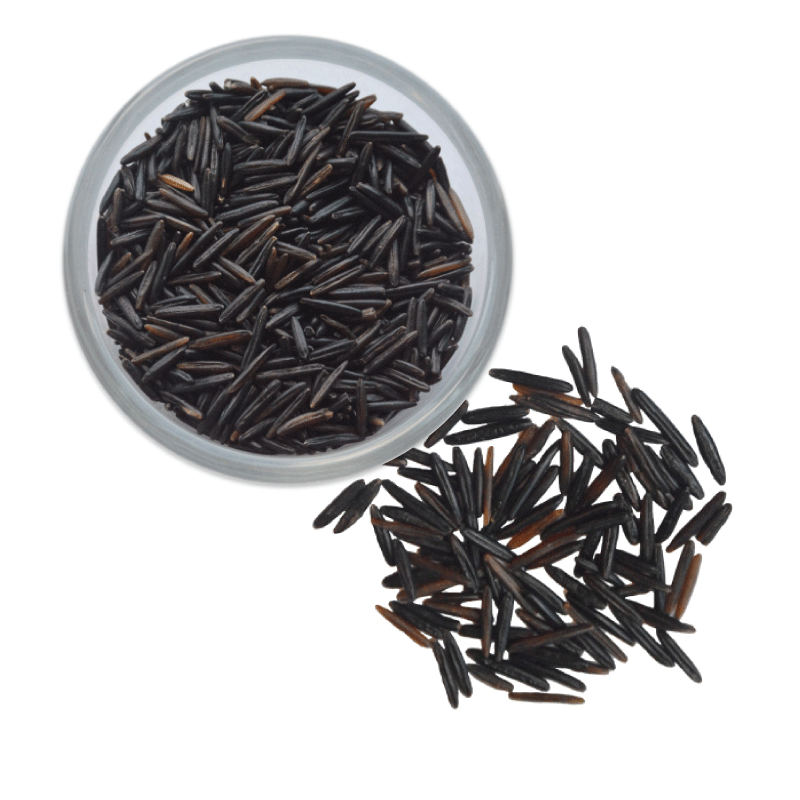
Wild rice grains are long, slender, and dark brown. Cooked grains have a cream-colored interior with a nutty flavor and chewy texture. Wild rice is perfect for mixing with white or brown rice, and ideal for stuffing, salads, and soups, or for adding color and texture to breads and desserts.
Growing Areas: California, Idaho, Minnesota, Oregon, and Wisconsin.

